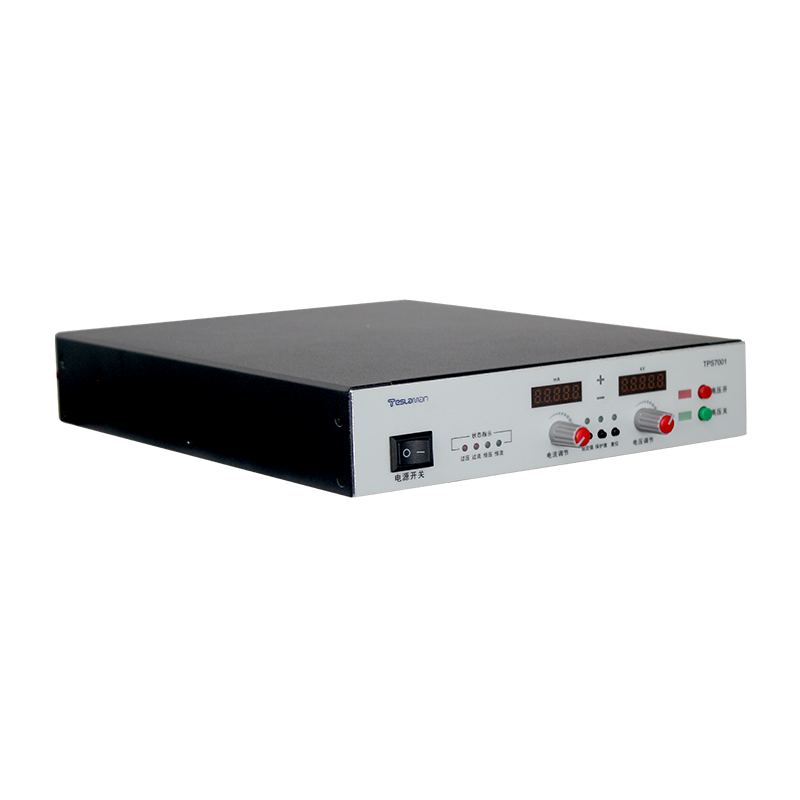Application of High-Voltage DC Power Supplies in High-Frequency Discharge
In modern industrial and research fields, high-frequency discharge technology has been widely used in plasma generation, material surface treatment, environmental governance, and new energy development due to its high efficiency, low energy consumption, and strong controllability. As the core energy supply unit of high-frequency discharge systems, the performance of high-voltage DC power supplies directly determines the stability of the discharge process, energy conversion efficiency, and the expansion potential of application scenarios. This article discusses the application characteristics of high-voltage DC power supplies in high-frequency discharge from three dimensions: technical principles, key performance requirements, and typical application scenarios.
1. Technical Adaptability of High-Voltage DC Power Supplies in High-Frequency Discharge
The high-frequency discharge process is essentially a physical phenomenon in which gas or liquid media are ionized and form a stable discharge channel under the action of an alternating electric field. This process requires the power supply to provide continuous and controllable high-voltage energy while meeting the dynamic response requirements of high-frequency switching. Through pulse width modulation (PWM) technology and high-frequency transformer coupling design, high-voltage DC power supplies convert input industrial-frequency alternating current into stable DC high-voltage output and adjust the output voltage and current in real time through a closed-loop feedback control system.
During the initial stage of discharge, the power supply must provide instantaneous high voltage to break down the dielectric strength and form a discharge channel. In the stable discharge stage, the power supply must maintain constant power output to avoid discharge extinction or uneven energy density caused by voltage fluctuations. For example, in plasma-enhanced chemical vapor deposition (PECVD) processes, high-voltage DC power supplies can improve plasma ionization rate and deposition uniformity while maintaining discharge stability by superimposing high-frequency AC signals, demonstrating the collaborative mechanism between DC power supplies and high-frequency discharge processes.
2. Key Performance Requirements for High-Voltage DC Power Supplies in High-Frequency Discharge
1. Dynamic Response Speed and Stability
The pulse period of high-frequency discharge typically ranges from microseconds to milliseconds, requiring the power supply to have nanosecond-level voltage adjustment speed. The collaborative design of internal energy storage capacitors, power semiconductor devices (such as IGBTs, MOSFETs), and control chips is the core to achieve fast response. For example, power supply systems using silicon carbide (SiC) devices reduce switching losses by more than 50% compared to traditional silicon-based devices, significantly improving stability under high-frequency conditions.
2. Energy Conversion Efficiency and Thermal Management Design
In continuous high-frequency discharge scenarios, power losses mainly occur in the conduction and switching losses of power devices. Optimizing transformer winding structures, adopting soft switching technologies (such as zero-voltage switching ZVS), and efficient thermal management systems (such as micro-channel liquid cooling) can increase power supply efficiency to over 95%, avoiding device failure caused by overheating.
3. Electromagnetic Compatibility (EMC) Design
Electromagnetic interference (EMI) generated during high-frequency discharge may interfere with the power supply control system. By installing LC filter networks at the input and output of the power supply, using electromagnetic shielding technology, and optimizing PCB layout, conducted and radiated interference can be effectively suppressed, ensuring reliable operation in complex electromagnetic environments.
3. Typical Application Scenarios and Technical Advantages
1. Industrial Plasma Processing
In metal surface modification processes, high-frequency discharge driven by high-voltage DC power supplies can generate high-density plasma, achieving material surface cleaning, etching, and coating deposition through ion bombardment. Compared with traditional radio frequency power supplies, DC power supplies can provide higher ion energy and deposition rates while avoiding self-bias effects in radio frequency modes, improving process controllability.
2. Environmental Governance and Energy Fields
In waste gas treatment, high-frequency discharge technology based on high-voltage DC power supplies can generate a large number of hydroxyl radicals (·OH) to efficiently degrade volatile organic compounds (VOCs). Experimental data show that when the power supply output voltage is 20kV and the pulse frequency is 50kHz, the degradation efficiency of toluene can reach over 92%. Additionally, this technology has demonstrated significant energy optimization effects in plasma-assisted combustion and fuel cell catalyst activation.
3. Scientific Research and Medical Applications
In laboratory-scale plasma research, the tunability of high-voltage DC power supplies (voltage range 5-50kV, frequency range 1-100kHz) provides a flexible testing platform for gas discharge characteristic studies. In the medical field, low-temperature plasma scalpels based on high-frequency discharge can achieve simultaneous tissue cutting and hemostasis by precisely controlling power supply output parameters, reducing surgical trauma.
4. Future Development Trends
With the development of wide-bandgap semiconductor materials (such as gallium nitride GaN) and intelligent control algorithms, high-voltage DC power supplies will evolve toward miniaturization, high power density, and intelligence. By introducing adaptive control strategies and multi-mode switching technologies, power supply systems can automatically optimize output parameters according to discharge load characteristics, further improving the energy efficiency and reliability of high-frequency discharge processes. In the future, the deep integration of this technology with artificial intelligence and the Internet of Things will drive high-frequency discharge applications toward intelligent and precise breakthroughs.




















